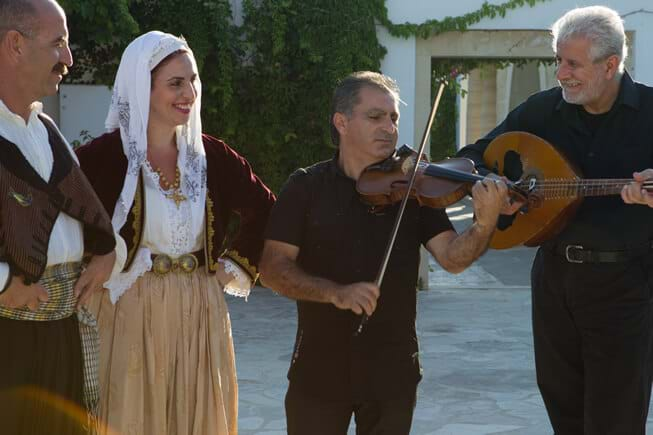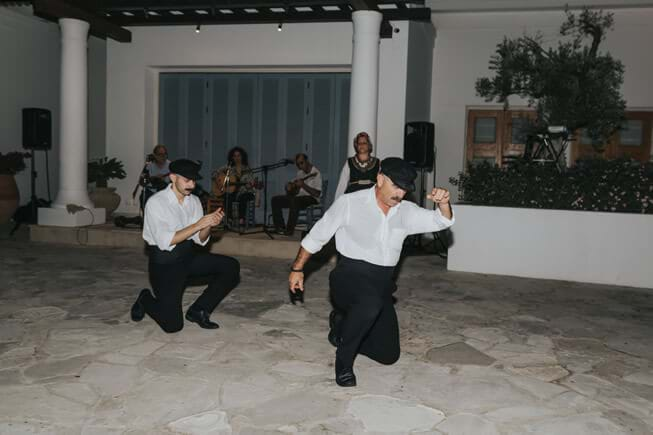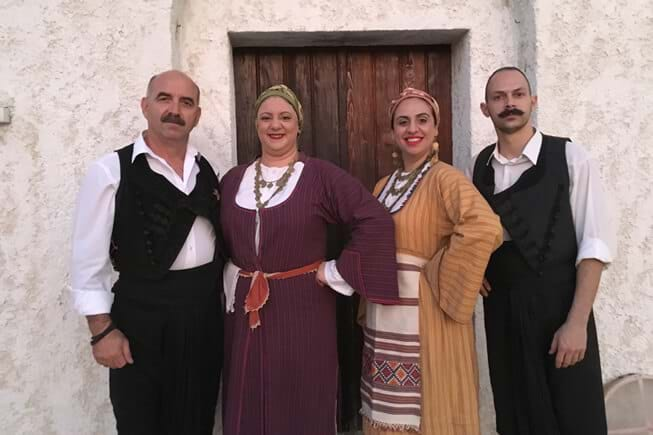Dancing has long played an important role in the culture of Cyprus’s villages. During Cyprus Night at Anassa’s Village Square, you can see some of these dances performed by Cypriots in traditional costumes. In Cyprus, men and women normally dance separately, with an exception being the dance of a bride and groom on the Monday following their Sunday wedding. At weddings and other celebrations, men’s dancing is usually competitive, with each man dancing solo in free style to rembetiko music while the others watch; a skilled and assured dancer would be considered a good prospect for marriage. Women’s dances are humble and usually performed in pairs of family members or friends. Men wear braka (a pair of puffy pants) over black leggings, a white silk shirt, a black piece of cloth wrapped several times around the waste, and a black vest embroidered to the dancer’s taste. Women’s costumes tend to express regional differences. The ‘sayia’ style from Karpasia features embroidered trousers beneath a dress and coat, while the ‘fousstani’ style favoured in rural areas combines a dress with an apron, shirt, and coat. Common female adornments are scarves wrapped on the head and around the waist, a lace handkerchief tucked into the waist, and necklaces and earrings made with gold coins. Anassa’s dancers come from the Dancing Group of the Association of Folkloristic Researches of Limassol, which dates the tradition to the 18th century in Byzantium. Come to dinner at the Village Square and enjoy the traditional cuisine, music, and food of Cyprus.


